Remote and Pristine Landscapes
Upper Mustang is celebrated for its remote and pristine landscapes that offer a stark contrast to the lush greenery commonly associated with other parts of Nepal. This region is a part of the Tibetan plateau and features a rugged, barren landscape that is both unique and captivating.
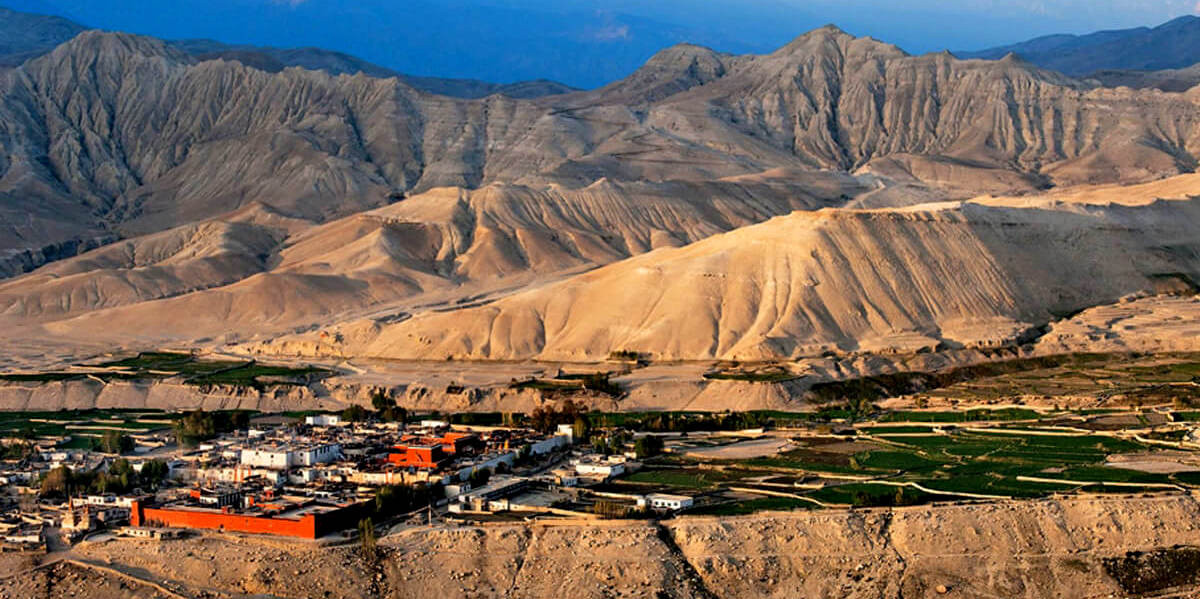
Characteristics of Upper Mustang's Landscapes
-
High Altitude Deserts: The area is characterized by high-altitude deserts that present a moonscape-like terrain, with vast expanses of sandy soil, rock formations, and sparse vegetation.
-
Dramatic Terrain: Steep rocky outcrops and deep gorges cut through the terrain, created by the erosive forces of wind and water over millennia.
-
Mountain Vistas: Despite the arid conditions, the region is surrounded by some of the world’s tallest peaks, including parts of the Annapurna and Dhaulagiri ranges, offering spectacular panoramic views.
Experience in Upper Mustang
-
Trekking Adventures: The unique terrain offers a distinct trekking experience, different from the lush trails found elsewhere in Nepal. Trekking routes like the one to Lo Manthang traverse barren hills, isolated valleys, and high passes, providing adventurers with challenges and the reward of unparalleled scenic beauty.
-
Photographic Opportunities: For photographers, the stark contrasts between the bright blue skies, the red and brown hues of the hills, and the occasional vibrant green of irrigated patches make for compelling compositions.
-
Solitude and Serenity: Due to its remote location and restricted access, Upper Mustang remains one of the least populated regions in Nepal, offering a sense of solitude and tranquility that is increasingly rare in today’s world.
Upper Mustang’s remote and pristine landscapes offer a journey back in time to a place where nature and culture have remained largely unchanged for centuries. It’s a destination that promises both adventure and introspection, nestled in the desolate yet beautiful expanse of Nepal’s hidden highlands.
Rich Tibetan Culture
Upper Mustang is a treasure trove of rich Tibetan culture, offering an authentic glimpse into traditions and practices that have been preserved for centuries, largely due to the region's historical isolation.
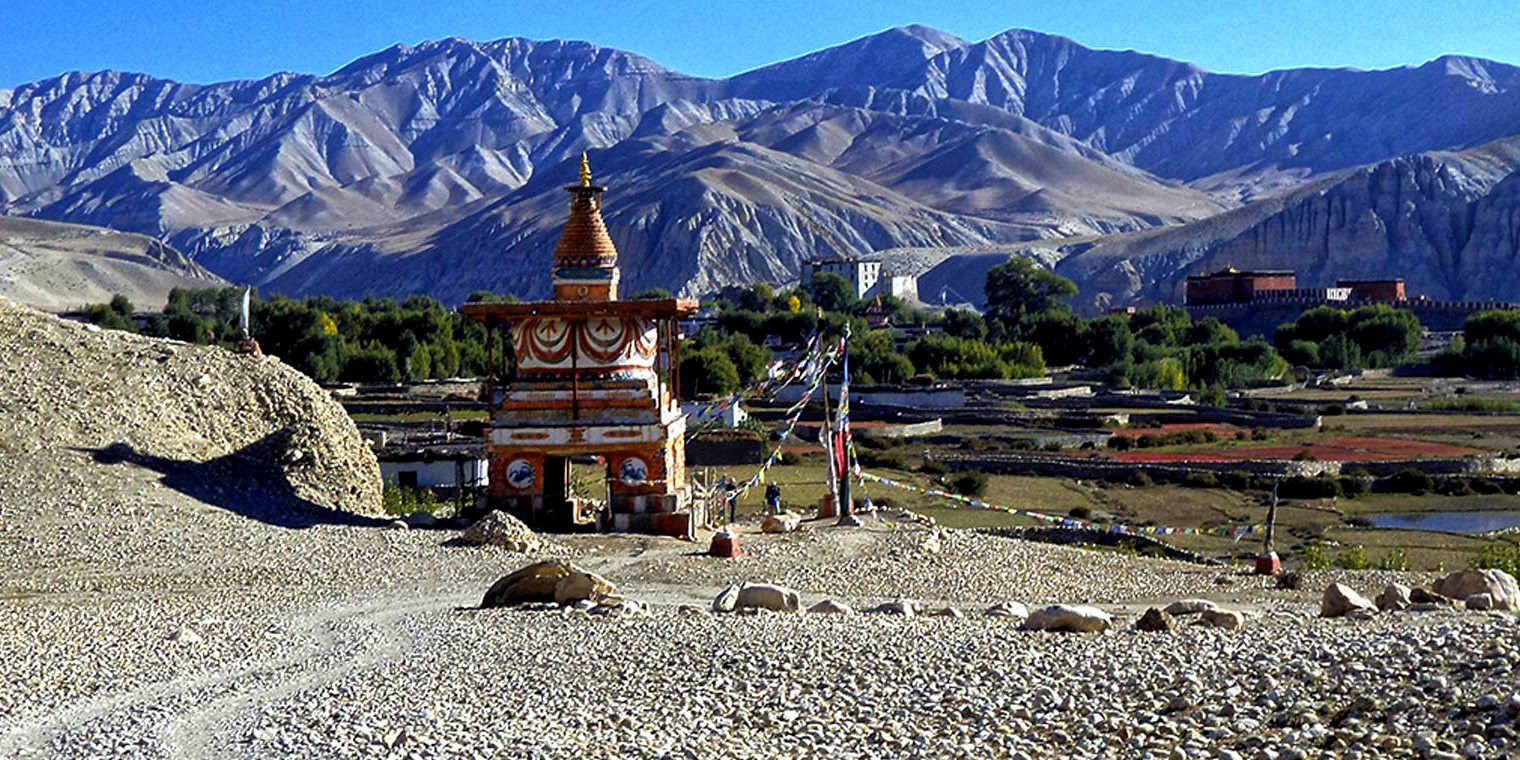
Preservation of Tibetan Heritage: Upper Mustang, formerly part of the Tibetan empire, has retained much of its cultural legacy, even as political changes have altered the landscape around it. This area provides a living museum of Tibetan culture, which is vivid in its monastic rituals, language, art, and daily life practices.
Cultural Highlights of Upper Mustang
-
Traditional Architecture: The villages in Upper Mustang feature tightly packed mud houses and monasteries painted in earthy tones, with flat roofs that are a signature of Tibetan architecture. The ancient city of Lo Manthang, in particular, is encircled by a massive protective wall and contains structures that have stood the test of time, offering insights into historical fortifications and settlement patterns.
-
Buddhist Monasteries and Shrines: Upper Mustang is dotted with numerous monasteries, chortens (Buddhist shrines), and prayer walls. Prominent monasteries like Thubchen, Jampa, and Lo Gekar are central to the spiritual life of the local communities and are repositories of exquisite religious art and ancient manuscripts.
-
Spiritual Practices: The daily life of the people in Upper Mustang is deeply intertwined with Buddhist practices. Prayer flags fluttering in the wind, mani stones carved with mantras, and the sound of monks reciting prayers create a profoundly spiritual atmosphere that pervades the entire region.
-
Festivals and Rituals: The Mustang Tiji Festival is a prime example of the vibrant cultural festivities celebrated here. This annual festival, originating from Tibetan Buddhism, features elaborate costumes, ritual dances, and dramatic reenactments of myths and stories, providing a colorful spectacle for both locals and visitors.
Cultural Exchange and Tourism
-
Interactive Experiences: For travelers, visiting Upper Mustang offers more than just sightseeing. It's an opportunity for cultural exchange, where visitors can engage with local traditions, taste regional cuisine, and even participate in daily activities, such as barley harvesting or traditional weaving.
-
Sustainable Tourism Practices: Tourism in Upper Mustang is regulated to ensure minimal disruption to the local way of life. Visitors are encouraged to respect local customs — for example, walking clockwise around religious structures and taking photographs only where permitted.
The rich Tibetan culture of Upper Mustang makes it a unique destination for those seeking to immerse themselves in an ancient way of life that is both preserved and practiced with reverence today. This deep cultural immersion is what sets Upper Mustang apart as a truly distinctive travel experience.
Ancient Monasteries and Temples
Upper Mustang is home to a remarkable array of ancient monasteries and temples, which serve as the heart of the region's cultural and spiritual life. These sacred sites are not only places of worship but also repositories of the region’s rich history, art, and architecture, reflecting centuries of Buddhist tradition.
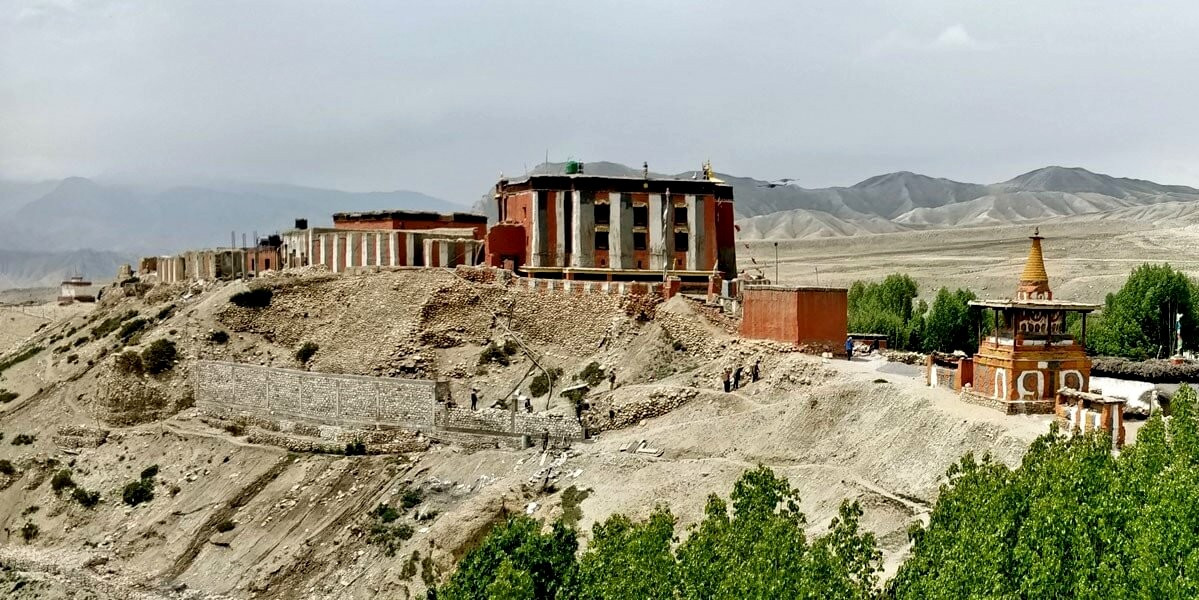
Key Monasteries and Temples in Upper Mustang
-
Lo Gekar Monastery: Also known as Ghar Gompa, Lo Gekar is one of the oldest Tibetan Buddhist monasteries in the world, believed to have been built in the 8th century by Padmasambhava, a revered figure in Tibetan Buddhism. The monastery is known for its ancient Buddhist murals and the belief that visiting it can cleanse one's sins.
-
Thubchen Gompa: Located in the heart of Lo Manthang, Thubchen Gompa is a large and impressive structure dating back to the 15th century. It features exquisite interior decorations, including intricate murals and carved wooden pillars that depict various Buddhist deities and motifs.
-
Jampa Monastery: Another significant monastery in Lo Manthang, Jampa Monastery houses a giant statue of the future Buddha and is adorned with some of the oldest and most beautiful wall paintings in the region.
-
Chode Monastery: This monastery is the religious center of Lo Manthang and includes a collection of smaller chapels. It holds a significant role in the spiritual and community life of the local population, hosting many of the religious festivals and rituals in Upper Mustang.
Cultural and Artistic Significance
-
Art Preservation: The monasteries in Upper Mustang are treasure troves of Tibetan art. They contain ancient thangkas (Tibetan silk paintings), statues, and frescoes that tell stories from Buddhist scriptures and local legends.
-
Architectural Marvels: The architecture of these monasteries reflects the adaptation to harsh climates and the ingenuity of early Tibetan builders. Built with mud and stones, the structures are designed to protect against the wind and cold while providing space for communal gatherings and religious ceremonies.
Spiritual and Community Role
-
Centers of Learning: Historically, these monasteries served not only as religious centers but also as schools. Monks and local children learned about Buddhism, Tibetan medicine, astrology, and other traditional sciences here.
-
Community Gatherings: Festivals and religious ceremonies at these monasteries are central to community life in Upper Mustang. These events provide an opportunity for social interaction, spiritual renewal, and the reinforcement of cultural norms and values.
Preservation Efforts
-
Conservation Projects: Many of the ancient sites in Upper Mustang are now under conservation projects to restore and preserve their artistic and structural integrity. These efforts are crucial in maintaining the cultural heritage of the region for future generations.
-
Regulated Tourism: Tourism to these sensitive cultural sites is carefully regulated to prevent degradation and to respect their spiritual significance. Visitors are expected to adhere to local customs and guidelines to minimize their impact.
These ancient monasteries and temples not only offer a window into the spiritual practices of the region but also help preserve the unique cultural identity of the Upper Mustang. They stand as lasting symbols of the area's resilience and devotion, drawing visitors from around the world to witness their timeless beauty and serenity.
The Walled City of Lo Manthang
The Walled City of Lo Manthang is a historic and architectural marvel, situated in the heart of Upper Mustang, Nepal. Serving as the former royal capital of the Kingdom of Mustang, which maintained its sovereignty until 2008, Lo Manthang is an exceptional example of Tibetan Buddhist culture and medieval fortress architecture preserved in its original form.
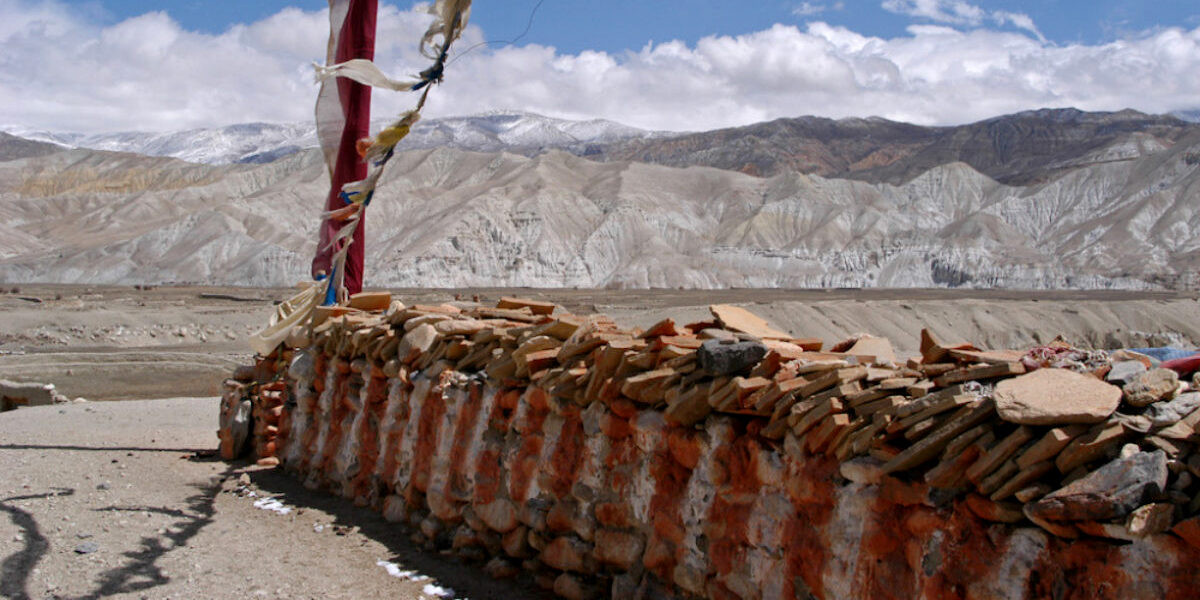
Historical Background: Lo Manthang was established in 1380 by Ame Pal, the founder king of Mustang, who constructed the wall to protect the city against bandits and warlords. The city layout was strategically planned, and the architecture was influenced by Tibetan styles, evident in its compact streets and whitewashed mud-brick houses.
Architectural Features
-
Protective Wall: The most distinctive feature of Lo Manthang is its massive surrounding wall, which stands about 6 meters high and features a series of square towers that once served as guard posts. The wall was designed to shield the city from the harsh winds of the high plateau as well as potential attackers.
-
City Gates: There are four gates in the wall, positioned at the cardinal points, but the main entrance is through the northeastern gate which historically acted as the sole entry point during times of threat.
-
Royal Palace: The Royal Palace is a tall, imposing structure located at the center of the city. Although partially damaged by earthquakes, it still stands as a significant symbol of Lo Manthang’s cultural and historical importance.
Cultural Significance
-
Monasteries: Lo Manthang contains several important monasteries, including the Jampa Lhakhang and the Thubchen Gompa, which are known for their ancient Buddhist scriptures, exquisite murals, and elaborate thangkas that date back several centuries.
-
Cultural Festivals: The city is a vibrant center for Buddhist festivals, most notably the Mustang Tiji Festival. This annual event is a colorful celebration featuring ritual dances performed by monks in elaborate costumes, symbolizing the exorcism of evil spirits.
Current Status and Tourism
-
Preservation Efforts: The city has undergone various preservation projects to maintain its architectural and cultural heritage, particularly after the damage from the 2015 earthquakes. These efforts are crucial in preserving Lo Manthang's status as a UNESCO World Heritage candidate site.
-
Tourist Attraction: Despite its remote location, Lo Manthang attracts thousands of visitors annually who come to admire its ancient beauty, explore its monasteries, and experience its festivals. Tourism is regulated to ensure that it does not disrupt the city's cultural integrity.
Lo Manthang remains one of the few places in the world where visitors can step back in time and experience a living museum of Tibetan culture, preserved in its original medieval state. Its isolation adds to its mystique, making it a compelling destination for those seeking to uncover the hidden treasures of the Himalayas.
The Mustang Tiji Festival
The Mustang Tiji Festival is a vibrant and significant cultural event in Upper Mustang, Nepal, celebrated with much fervor and enthusiasm. This three-day annual festival, held in the walled city of Lo Manthang, encapsulates the rich spiritual heritage and communal spirit of the region. Tiji comes from the Tibetan words "Tempa Chirim" which means "Prayer for World Peace".

Origins and Significance: The festival originates from an ancient myth about a deity named Dorje Jono who battles against his demon father to save the Kingdom of Mustang from destruction. The demon, causing havoc by creating a water shortage (considered a precious resource in this arid region), is defeated by Dorje Jono, thus bringing prosperity back to the land. This story symbolizes the triumph of good over evil and is a prayer for peace and prosperity.
The Festivities
-
Ritual Dances: The core of the festival is the series of ritual dances performed by the monks of the Choedhe Monastery, which houses major monastic schools in Lo Manthang. The monks don elaborate costumes and masks representing divine and demonic figures, performing dances that tell the story of Dorje Jono. These dances are accompanied by traditional music played on lutes, drums, and horns.
-
Colorful Costumes: Both performers and local spectators wear traditional attire, adding to the visual spectacle. The monks' costumes are particularly intricate, with detailed masks that convey the characters of the mythological narrative.
-
Community Participation: The entire community of Lo Manthang, as well as visitors from neighboring villages and tourists, come together to witness and participate in the festivities. It is a time for reunion, celebration, and the reinforcement of social ties.
Cultural and Tourist Attraction
-
Cultural Preservation: The Tiji Festival is not only a tourist attraction but also an important part of the effort to preserve and celebrate the unique cultural identity of the Mustang region. The festival helps maintain ancient rituals that might otherwise be at risk of fading away in the fast-paced modern world.
-
Tourism and Economy: For tourists, the festival offers a rare glimpse into the depth of Mustang’s cultural traditions, with the added backdrop of dramatic landscapes and ancient architecture of Lo Manthang. The influx of visitors during the festival provides a significant boost to the local economy.
Sustainable Tourism: To attend the Mustang Tiji Festival, foreigners must obtain a special Upper Mustang Permit, which helps regulate the number of visitors and minimize environmental and cultural impacts. This careful management ensures that tourism supports cultural preservation efforts while offering an authentic experience to visitors.
Experience: Visiting during the Tiji Festival provides a profound insight into the spiritual and cultural life of the Tibetan people in Mustang. It offers an unforgettable experience of music, dance, and community spirit, set against the backdrop of one of the most remote and stunningly beautiful places on earth.
The Mustang Tiji Festival is a powerful celebration that not only entertains but also conveys messages of harmony and rebirth, resonating deeply with all who witness its ancient rituals.
Spectacular Trekking Routes
Upper Mustang offers some of the most spectacular trekking routes in the world, attracting adventurers and nature enthusiasts who seek to explore its unique and rugged landscapes. These treks are renowned not only for their breathtaking scenery but also for the cultural insights they offer into the life of the remote Himalayan region.
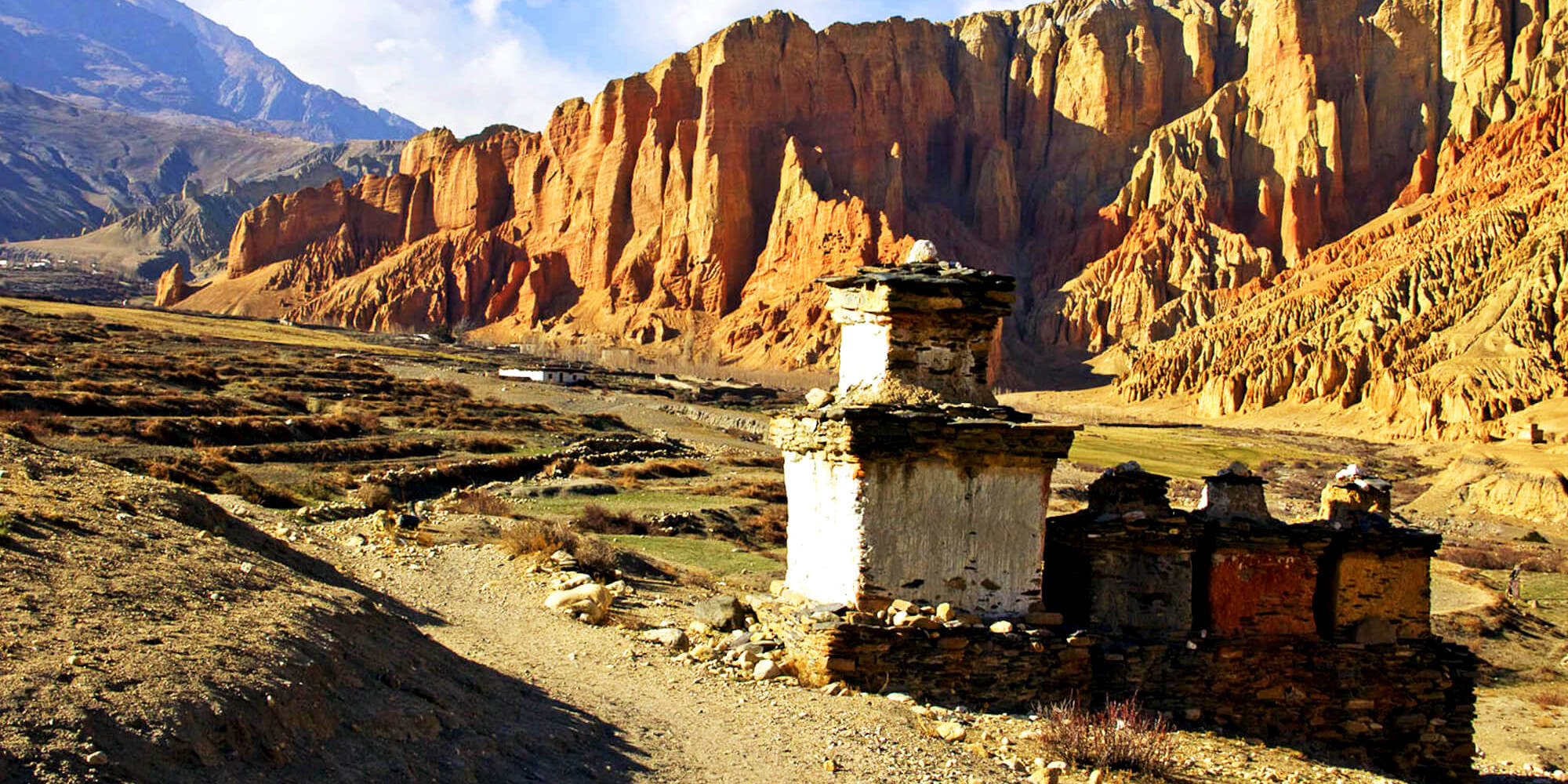
Key Features of Trekking in Upper Mustang
-
Varied Terrain: The routes traverse through a stark high-altitude desert, characterized by rocky outcrops, deep canyons, and barren plateaus. This region contrasts sharply with the lush greenery found in other parts of Nepal, offering a unique trekking experience.
-
Cultural Immersion: The trails pass through ancient villages where life has remained largely unchanged for centuries. Trekkers can witness and experience the traditional Tibetan lifestyle, including local customs, festivals, and monastic activities.
Popular Trekking Routes in Upper Mustang
-
The Classic Mustang Trek: This route leads trekkers to the heart of the region, Lo Manthang. Starting from Jomsom, this trek takes about 10-12 days and allows trekkers to explore the major cultural sites, including monasteries, royal palaces, and the medieval city itself.
-
The Lo Manthang Circuit: For those who wish to delve deeper, this circuit around Lo Manthang offers a comprehensive look at the geographic and cultural landscape of Upper Mustang. The route includes visits to lesser-known villages and sacred sites, providing a more intimate glimpse into the local life.
-
Nar Phu and Upper Mustang Trek: Combining the remote Nar Phu valley with Upper Mustang, this challenging trek offers diversity in both scenery and cultural exposure. It is longer, typically lasting around three weeks, and is suited for those looking for an extensive high-altitude trekking experience.
-
The Mustang Tiji Festival Trek: Timed to coincide with the vibrant Mustang Tiji Festival, this trek focuses on participating in the annual celebrations in Lo Manthang. It offers a unique combination of natural beauty and cultural festivity.
Trekking Conditions and Considerations
-
Permits and Regulations: Access to the Upper Mustang is restricted; trekkers need a special permit and must travel with a registered guide. These measures help protect the region’s cultural heritage and natural environment.
-
Best Time to Visit: The ideal time for trekking in Upper Mustang is during the dry seasons, from late spring to early autumn, particularly from May to October. The region lies in the rain shadow of the Himalayas, so it remains relatively dry even during the monsoon season in other parts of Nepal.
-
Physical Demands and Preparation: Treks in the Upper Mustang can be demanding due to the high altitude and arid conditions. Adequate preparation, including physical conditioning and proper acclimatization, is essential for a safe and enjoyable experience.
Sustainable Trekking Practices: To preserve the pristine environment and cultural authenticity, trekkers are encouraged to follow sustainable practices such as minimizing waste, respecting local customs, and using resources responsibly. Operators like Relax Getaways ensure that treks are conducted in an environmentally and culturally respectful manner.
Trekking in Upper Mustang offers more than just a physical challenge; it is an opportunity to step back in time and experience a landscape and culture that have remained isolated from the rest of the world. These routes not only challenge the body but also enrich the soul, making every step a journey through history and spirituality.
Sustainable Tourism Practices
Upper Mustang, renowned for its remote beauty and rich cultural heritage, is a prime example of a destination where sustainable tourism practices are crucial. The preservation of its environment and culture while welcoming tourists requires careful management and responsible travel behaviors.
Key Aspects of Sustainable Tourism in Upper Mustang
-
Regulated Access: Permit System: To limit the impact of tourism, the Nepalese government requires all visitors to obtain a special Upper Mustang Permit. This system helps control the number of tourists, ensuring that the area does not suffer from over-visitation.
-
Guided Tours: Travelers must be accompanied by a licensed guide, which ensures that tourists do not inadvertently stray into restricted areas or engage in activities that could harm the local environment or disrespect cultural norms.
Cultural Preservation
-
Respect for Local Customs: Tourists are educated about local customs and religious practices to prevent cultural insensitivity, which can cause distress among local communities.
-
Support for Local Heritage Projects: Many tourism operators contribute to the preservation of historical sites and support cultural festivals, which helps maintain the cultural vitality of the region.
Economic Benefits for Local Communities
-
Employment Opportunities: Tourism provides jobs for residents, including guiding, hospitality, and transport services, which helps distribute the economic benefits of tourism.
-
Local Sourcing: Tour operators are encouraged to source goods and services locally whenever possible, which helps keep the economic benefits within the community and reduces the carbon footprint associated with transporting supplies from far away.
Environmental Conservation
-
Waste Management: Efforts are made to minimize waste produced by tourism activities. This includes practices like carrying out all non-biodegradable waste and using water treatment methods that do not pollute local water sources.
-
Wildlife Protection: Guides and tourists are instructed to respect wildlife, maintain a safe distance, and not disrupt the natural habitats, ensuring that the ecological balance is maintained.
Education and Awareness
-
Tourist Education: Tourists are provided with information about the importance of conservation and cultural respect before and during their visit. This education includes the impact of their actions on the environment and communities.
-
Community Awareness: Locals are also educated about the benefits of sustainable tourism and trained in methods that enhance visitor experience while protecting their heritage and environment.
Infrastructure Development: Eco-Friendly Facilities: The development of tourist facilities, such as lodges and restaurants, is done in an environmentally sensitive way, using local materials and sustainable practices to minimize environmental footprints.
Challenges and Future Directions: Despite these efforts, sustainable tourism in Upper Mustang faces challenges such as balancing growing tourist numbers with conservation and ensuring that economic benefits are widely distributed among all community members. Going forward, there is a focus on enhancing sustainable practices by integrating more advanced technologies and greater community involvement in tourism planning and management.
By adhering to these sustainable tourism practices, Upper Mustang not only protects its unique landscape and heritage but also sets a standard for responsible tourism that benefits both visitors and locals alike. This approach ensures that the region remains a vibrant and pristine destination for future generations.
Exclusive Travel Experience
Upper Mustang offers an exclusive travel experience that is unrivaled due to its remote location, unique cultural heritage, and dramatic landscapes. This region, once a restricted demilitarized area until the early 1990s, remains one of the most preserved areas in the world, offering a glimpse into a way of life that has remained unchanged for centuries.
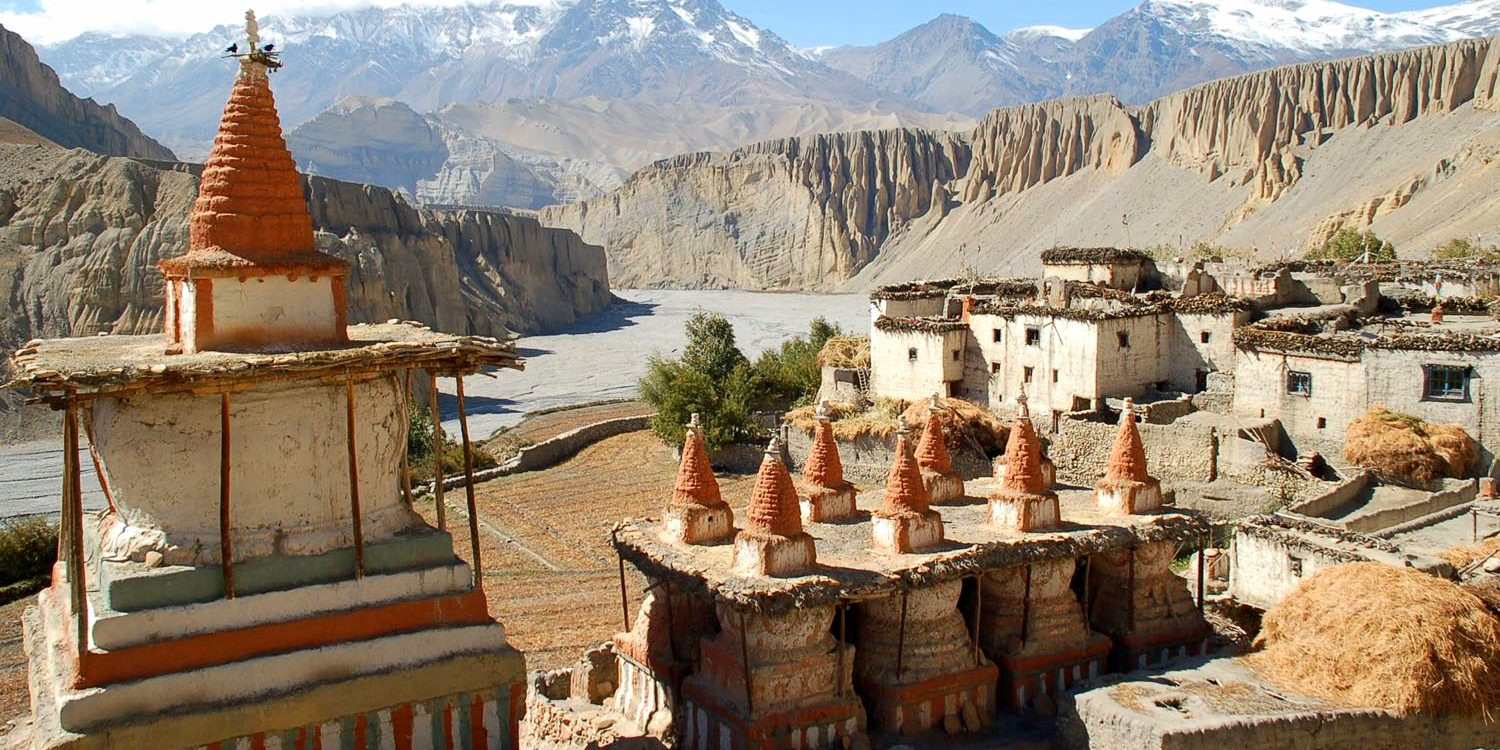
Elements of an Exclusive Travel Experience in Upper Mustang
Limited Accessibility
-
Permit Requirement: Access to the Upper Mustang is controlled through a special permit system, which limits the number of visitors each year. This not only helps protect the delicate ecosystem and cultural heritage but also ensures an exclusive and crowd-free experience for those who visit.
-
Remote Location: Nestled in the Himalayas, the journey to Upper Mustang itself is an adventure, involving flights, jeep rides, and treks through rugged terrain, which deters the casual tourist and adds to the exclusivity.
Cultural Richness
-
Intact Tibetan Culture: Upper Mustang is one of the few places on earth where Tibetan culture remains largely intact. Visitors have the unique opportunity to immerse themselves in traditional celebrations, like the Mustang Tiji Festival, and visit ancient monasteries that are still active centers of religion.
-
Historical Sites: The region boasts significant historical sites including the walled capital of Lo Manthang, with its alleyways and courtyards that feel like a journey back in time.
Natural Beauty
-
Stunning Landscapes: The area's stark, high-altitude desert with deep ravines, rocky cliffs, and colorful stratifications provides dramatic visuals that are vastly different from the lush green landscapes found elsewhere in Nepal.
-
View of the Himalayas: The trek routes offer spectacular views of the Himalayan peaks, providing a serene backdrop that complements the rugged terrain.
Luxury Amidst Wilderness
-
High-End Accommodations: Despite its remote nature, Upper Mustang offers a range of accommodations, from luxury lodges to eco-friendly campsites, all designed to provide comfort while complementing the natural and cultural environment.
-
Personalized Services: Tour operators, such as Relax Getaways, specialize in creating tailored experiences that cater to individual preferences, ranging from private tours to personalized culinary offerings, ensuring a memorable stay.
Sustainable and Ethical Travel
-
Conservation Efforts: Tourism here is deeply intertwined with efforts to conserve local traditions and the environment. This responsible approach to tourism ensures that visitors not only enjoy their experience but also contribute positively to the preservation of the region.
-
Community Benefits: Engaging with the local economy is a critical aspect of tourism in Upper Mustang. Visitors contribute directly to the welfare of local communities through various community-based tourism initiatives that promote sustainable development.
An exclusive travel experience in Upper Mustang is not just about the physical journey; it's about engaging with a deep, vibrant culture, exploring untouched natural beauty, and doing so in a manner that respects and preserves the uniqueness of the region. For those seeking a profound connection with a place and its people, Upper Mustang offers an unparalleled opportunity.
Ideal Time for Upper Mustang (The Forbidden Kingdom of Nepal)
The ideal time to visit Upper Mustang is one of the crucial factors to consider when planning a trip to this remote and striking region of Nepal. Due to its high altitude and unique geographical position in the rain shadow of the Himalayas, Upper Mustang has a distinct climate that significantly influences the best travel times.
Best Seasons to Visit Upper Mustang
Late Spring to Early Summer (May to June)
-
Weather Conditions: During these months, the weather is generally dry and stable, with warm temperatures that make trekking and exploring comfortable.
-
Advantages: This period is before the onset of the monsoon season in other parts of Nepal, which means Upper Mustang, being in the rain shadow, remains dry and accessible. The clear skies provide excellent visibility, ideal for enjoying the panoramic views of the Himalayas.
-
Cultural Insight: The famous Mustang Tiji Festival, which is a colorful and vibrant event, usually takes place in May, offering visitors a unique opportunity to experience local culture and festivities.
Late Summer to Early Fall (September to October)
-
Weather Conditions: Post-monsoon, the landscape of Upper Mustang is particularly vibrant. The air is fresh and clear, and the temperature is comfortably cool, ideal for trekking.
-
Advantages: This time is considered the peak season for trekking due to the excellent weather conditions. The monsoon rains clear up the dust in the air, enhancing the clarity and crispness of the mountain views.
-
Cultural Insight: The harvest season in late September brings local activities and an opportunity to see the agricultural side of life in Upper Mustang, adding an extra layer to the travel experience.
Considerations for Visiting
-
Off-Peak Seasons (July to August, November to April): Monsoon (July to August): While most of Nepal is wet during the monsoon, Upper Mustang usually remains dry. However, getting there might be more challenging due to the rains affecting flights and road conditions to Jomsom, the gateway for treks into Mustang.
-
Winter (November to April): The region experiences cold temperatures and snow, which can make trekking difficult and uncomfortable. Many residents move to lower altitudes during this time, and some guesthouses and services may be closed.
Visiting Upper Mustang during the ideal months of May-June or September-October offers not only the best weather conditions but also enriches the experience with cultural festivities and lively local interactions, making for an unforgettable adventure in "The Forbidden Kingdom" of Nepal.
Labeled as "The Forbidden Kingdom of Nepal," Upper Mustang gives an uncommon and deep travel experience. Distant and untouched pristine beauty, spectacular scenery, and ancient Tibet culture abound in this remote area. Upper Mustang offers a unique look at customs and way of life that have not much changed for many centuries since it lies in the rain shadow of the Himalayas.
Visitors can visit time-worn monasteries, attend lively cultural festivals, and hike across harsh, beautiful landscapes. Make sure to visit during late spring to early summer and late summer to early fall, therefore maximizing conditions for sightseeing. Preserved with controlled access to keep its cultural and ecological integrity, a trip to Upper Mustang is not only a visit but a deep exploration of one of the final unspoiled frontiers on the planet.
For the Nepal Tour, please click here.
If you are looking for different kinds of Nepal Tours or Trekking Packages, feel free to contact us.
.jpg)







